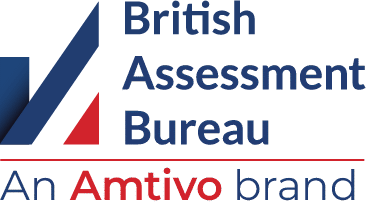Organisations are responsible for the occupational health and safety of their workers and anyone affected by their activities. This includes promoting and protecting both physical and mental health.
Adopting an Occupational Health & Safety (OH&S) management system helps organisations create safe workplaces, prevent work-related injuries and illnesses, and continually improve OH&S performance.
Despite this, workplace injuries and ill health cost UK businesses £21.6 billion in 2022/23. To protect both your employees and your financial stability, your organisation may want to consider implementing a Health and Safety Management System (HSMS).
What Is an Occupational Health and Safety Management System?
An Occupational Health & Safety (OH&S) Management System is a set of guidelines and practices designed to keep everyone in the workplace safe. It helps identify and manage health and safety risks that could lead to accidents or health issues.
The main goal of an OH&S Management System is to prevent work-related injuries and illnesses and to create safe workplaces for employees and visitors by spotting potential dangers, removing hazards and reducing risks with effective measures. By implementing this management system, a business can improve its health and safety performance, and acting early on opportunities for improvement can make the system more effective.
An OH&S Management System helps organisations tackle safety issues actively by encouraging a safety-focused culture, providing training and aiming for continual improvement. This can result in fewer accidents and boost overall operational efficiency.
Certification of an OH&S Management System is a proven and effective tool for maintaining and achieving legal compliance. (Note: the standard for certification contains requirements for determining legal requirements and evaluating compliance).
What Does an Occupational Health and Safety Management System Cover?
An OH&S Management System covers several key areas to support a safe and healthy work environment:
- Leadership commitment – Strong leadership and accountability from top management, who promote a supportive culture.
- Health and Safety Policy – Establishing a clear policy that outlines the organisation’s commitment to health and safety, which aligns with organisational goals.
- Worker consultation and participation – Ensuring effective communication of health and safety information to all employees, and providing necessary training to employees to ensure they understand and can follow safety procedures.
- Risk assessment and hazard identification – Developing processes for hazard identification and risk control which includes identifying potential hazards, assessing risks, and planning preventive measures.
- Emergency preparedness and response – The system includes emergency management plans, ensuring employees know how to react quickly and effectively. This covers evacuation plans, first aid procedures and assigning responsibilities to specific staff. Regular drills are conducted to minimise harm during unexpected events.
- Incident reporting and investigation – The system includes a process for reporting and investigating health and safety incidents. This helps identify the root cause, allowing organisations to apply the best corrective measures and prevent future occurrences.
- Performance measurement and continual improvement – Performance metrics are used to evaluate the effectiveness of safety initiatives. Continual improvement is achieved by analysing data, setting new objectives based on this and implementing new, data-led strategies to enhance safety performance.
- Safety assurance – This involves monitoring and evaluating the effectiveness of safety measures. Regular audits and inspections take place to maintain compliance and identify areas for improvement.
- Legal compliance and regulatory requirements – An OH&S helps businesses comply with relevant health and safety laws and regulations. Organisations must implement processes for the determination of legal requirements and evaluation of compliance.
Read about who should be responsible for health and safety in the workplace.
What Are the Benefits of a Health and Safety Management System?
Implementing a strong Health and Safety Management System offers several benefits for businesses:
1. Improved employee safety and reduced workplace incidents
An OH&S Management System can significantly improve employee safety, leading to fewer workplace incidents and lowering costs like insurance premiums.
2. Better legal compliance and a reduced risk of penalties
Regular audits can keep organisations updated with changing laws and regulations, allowing them to avoid expensive legal fines and create a safer workplace.
3. Increased employee morale and productivity
A safe working environment can boost employee morale, resulting in higher productivity and job satisfaction. Workers can feel more valued and secure when their health is prioritised, leading to fewer absences and better organisational performance.
4. Better risk management and operational efficiency
An OH&S Management System offers a clear approach to managing risks and enhancing operational efficiency. By spotting and addressing hazards early, businesses can prevent disruptions and reduce resource waste.
5. Enhanced reputation and stakeholder trust
A strong Health & Safety Management System (HSMS) boosts an organisation’s reputation for safety, building trust among stakeholders and clients who prefer not to be linked with an unsafe business. Showing dedication to health and safety can lead to more opportunities and strengthen stakeholder relationships.
Read more about the benefits of occupational health and safety management systems.
How To Implement a Health and Safety Management System
Here’s a simple guide to setting up an Occupational Health and Safety Management System (OH&S) in your business:
1. Conduct an initial gap analysis
Start by reviewing your current health and safety practices. Identify any gaps in your policies and areas for improvement. This will help you comply with laws and regulations. Without this analysis, it isn’t easy to build an effective HSMS.
2. Set objectives and targets
Define clear and measurable goals that align with your organisation’s overall safety aims. These targets should be realistic yet challenging to encourage ongoing improvement and foster a safety-focused culture throughout the organisation.
3. Develop policies and procedures
Create detailed policies and procedures that outline specific safety practices and procedures. Ensure these documents are accessible and effectively communicated to all employees, providing a clear framework for maintaining safety standards.
4. Allocate resources and responsibilities
Provide the necessary resources to employees involved in the HSMS. All roles and tasks should also be communicated and documented for accountability.
5. Train employees and promote awareness
Implement thorough training programmes to give employees the knowledge and skills for safety protocols. Besides formal training, promote health and safety awareness through regular communication and involve employees in discussions and decision-making.
6. Monitor performance
Regularly check and evaluate your HSMS to see how well it’s working. Analyse health and safety data from audits, incident reports, and employee feedback. This helps you spot areas needing improvement or adjustments. Repeat this process regularly to ensure the system remains effective and responsive.
Why ISO 45001 Certification Is Useful
ISO 45001 is the international standard for occupational health and safety management. It provides organisations with a framework to improve employee safety, reduce workplace risks and enhance overall health and wellbeing in the workplace.
Achieving an ISO 45001 certification can offer many advantages for your business beyond just protecting your employees. It can help your organisation:
- Improve compliance with legal and regulatory requirements
- Attract new clients and business
- Access global business opportunities
- Boost efficiency through streamlined processes
- Show a strong commitment to safety
Read our beginner’s guide to ISO 45001.
ISO 45001 is a long-term investment that encourages businesses to review and enhance their health and safety practices continually. The benefits grow over time, meaning the more you improve, the more your organisation stands to gain.
Find out about our ISO 45001 training courses.
Start Your ISO 45001 Certification With British Assessment Bureau
Ready to implement an effective, robust HSMS and become ISO 45001-certified? British Assessment Bureau can help.
We are a UKAS-accredited certification body that can provide your business with expert support throughout the certification process. Take a look at the glowing reviews we’ve received on Feefo, where we’ve been recognised with “Exceptional” service status.
Our auditors are with you from the initial audit to your recertification audit three years later.
We promise no hidden costs and transparent pricing at each step.
Get started on your journey to ISO 45001 certification – get a quote today or contact our team of experts to discuss your needs.


